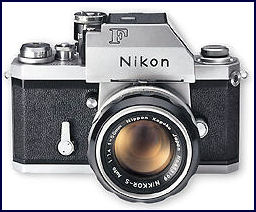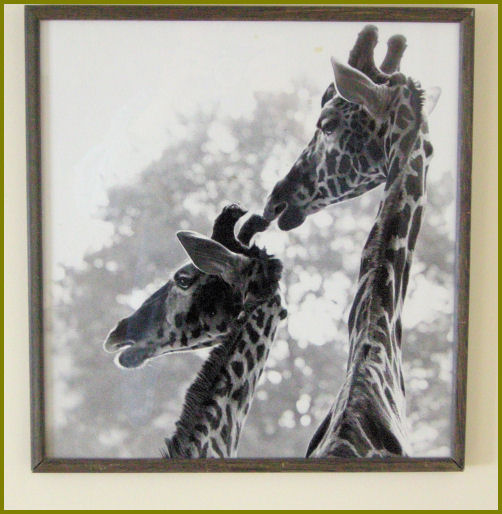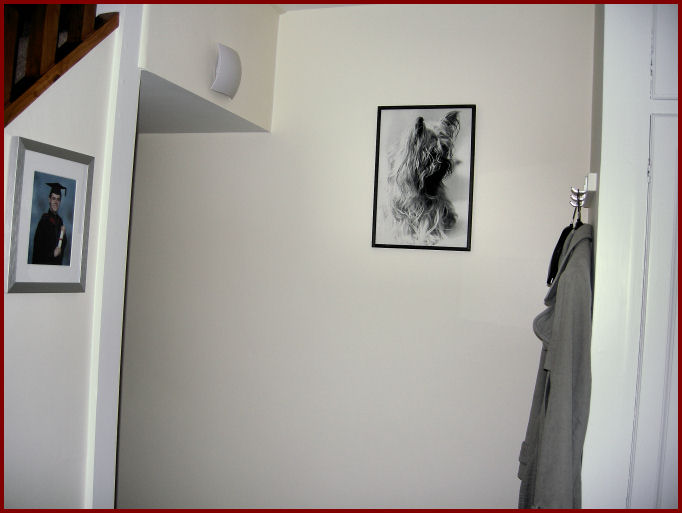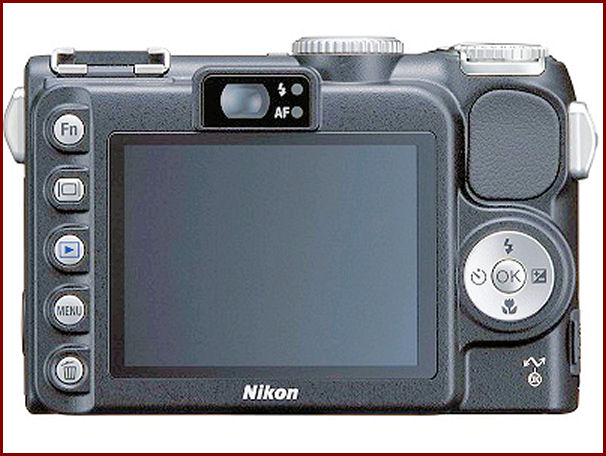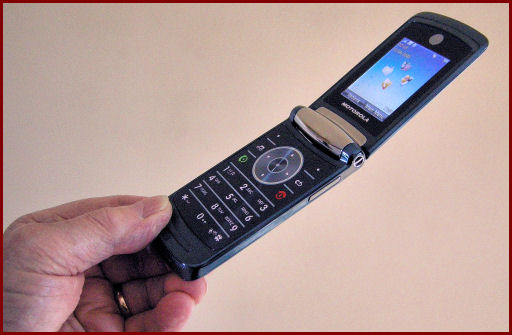Donald MacLean's Blog 7
|
SHRINKAGE
"Congratulations."
The phone call is from the Chief Media Correspondent of a national newspaper. He more often berates me - about the surfeit of jazz on the BBC's music channel, for instance. (Others, like my friend John Dankworth, deplore the lack of it).
"You've been selected to give the next annual lecture at the Royal Society of Arts - what will it be about?".
This was thirty years ago. I had no idea what it would be about ... I had no idea I'd been chosen, but I was quite accustomed to learning of developments in my life in this way. Two officials - rather formal in dress and manner - came to my office later that morning and presented the invitation. I refrained from suggesting that coordination with their Press Office might benefit from a little fine-tuning, and said "Why me?" "We usually have professors who are brilliant at explaining complex things ... what has been discovered ... the past. This year we want to focus on the future."
It was televised - I've just had a look at the tape. On the wrong side of the cameras my performances always seemed uneasy ... and the production was unimaginative ... but I think you would agree that the forecasts I made were bulls-eyes. "What - in one word - will be the most significant development in the next 20 years?" "Miniaturisation. Surprisingly, shrinkage will enable us to do completely new things."
Among the several nice results of these blogs - for me - are the emails of praise - from kind folk who have not only found my stories interesting but enjoy the way I write them. Fan letters, I suppose. Like the old days. I mention this now because several of you have noticed that I repeatedly do what I've just done there - force myself to distil into a few words what I want to say. If I've had some success as a strategist it is because I use the word 'focus' rather a lot ... I may set off on a journey unsure of my route, but if I'm unsure of my destination I don't set off.
"Surprisingly, shrinkage will enable us to do completely new things."
(I think Twitter will be the ultimate winner of the social-sites competition. Why? Because it's limit of 140 characters per message enforces focus.)
At the Royal Society of Arts, as the audience were signing-in, every fifth person was given a small package. During the lecture I asked them to unwrap the unit it contained, then press its green button and read whatever the tiny screen displayed. As they did so a wave of amusement, then applause, swelled round the audience. What they saw was merely a greeting ... but personalised - it addressed each recipient by name.
Wireless communication was not new, of course - but the ability to communicate with an individual receiver was sensational. Mobile phones were possible!
[I could have called this Blog "Things 2" ... although 'shrinkage' is the thread it is 'things' that provide the evidence. I'll include a limited amount of techy detail - for those (like me) who are interested - but my intention, as always, is to make the human aspects primary.]
At the lecture we then considered a typical management problem. Six conflicting factors were displayed on a big screen. Underneath it was a matrix. I pointed to each factor in turn and asked for a decision from someone in the audience. As each decision was implemented the effect of it rippled through the other factors. I suggested that this management tool - the immediate answering of "What if ..." questions - was the first conclusive evidence that computers would bring unique capabilities ... and that this power would become available to us individually now that computers were being miniaturised.
Later that same year I was given a new program called "Visicalc". The 'spreadsheet' had arrived.
In a corner of my garage lies an old holdall ... I have just unzipped it, dusted off the cobwebs, and extracted this ...
... the personal computer on which I ran Visicalc thirty years ago.
By modern standards its storage capacity and processing power are pathetic. But a spreadsheet needed little of either. Just a little patience while the audio tape loaded the application each time you wanted to use it!
It's
memory was quite impressive at the time. The camera with which I took its portrait just now
has a memory the size of a postage-stamp ... which holds one million times more!
(Computer programmes were not covered by copyright ... so the Harvard student Dan Bricklin, who created Visicalc, gained little from his ingenuity ... a deterrent to progress which I later used to good effect in the successful campaign to change the law.)
The
'netbook' on which I'm creating this blog is smaller ...
... but,
like my camera, its storage capacity and its processing power are greater by a
factor with many zeros! And it is part of our wireless network that
links it to the internet, to the pc and printer in my den, to the laptop in
the lounge where I send & receive dozens of emails daily, and to Ann's laptop
in her study. It can do all this from my den or from the summerhouse at the far end of the garden (where I'm happy to be on this midsummer day).
Many of its facilities are integrated - no longer 'add-ons'. For example with one click my wife and I can converse - visually as well as aurally - if we wish. (She doesn't wish!)
And it does all this all day without recharging its battery.
|
This summerhouse serves also as my Ham Radio 'shack' during the summer. The netbook is also part of my radio station.
|
|
|
|
|
|
|
Near the Southern end of the M1 motorway - Britain's main artery - there still is a small, disused schoolhouse. In the early eighties, once a month, its little car-park was full. And the interior teeming with a disparate assortment of humans. I wonder if you would have guessed what brought them together - many of them travelling great distances to be there?
It was
this:
I had visited a small business, called Apple, in Cupertino, California, had been impressed with their product, and had acquired one of the first European versions (later replaced with this one - the Apple II).
It was the Apple II that convinced me that my employer, EMI (in its heyday), should create a software division.
I've never considered myself a geek - though many of my companions at those schoolhouse meetings were skilled boffins - it was just that this avant garde device had such power (48Kb of memory and floppy-disc drives) - a huge wonderland to explore, and to exploit for practical purposes. And for a while this physical exchanging of experience was the only way to learn how.
Then a second source of support appeared - publications. The magazine "Byte" was my preferred reading and through it I heard about new magazines specifically for Apple owners - so I subscribed to them. I still have the 'first editions' of two of them which were available in the UK, for owners of Apple IIs. They're dated "January 1981":
Computers had been huge - costly - and consequently rare! This was the start of the revolution which eventually turned them into everyday commodities. |
|
If you are one of the many kind people who have followed this story from the beginning you will have sensed my love of fine engineering - why else would I have bought and restored a 1926 Rolls Royce. The other prime example in my life has been this Leica camera. It now feels heavy and cumbersome - I can't imagine how I ever enjoyed loading it with film and toting it, in its leather case, on photo expeditions. But ... well, I still have it, and every few years I take it out of the safe just to hold it - and as I do so my pulse quickens. If you ask me what is the most beautiful of all my 'things' - it's this.
Through the sixties photography became my principal hobby. I converted a little attic space into a dark-room and gradually built-up an extensive Nikon outfit which fitted in a case with custom-carved spaces in its foam-rubber interior for the three lenses I most used, and my Weston Master exposure-meter.
I bought the latest equipment for developing & printing colour film ... but almost immediately stopped taking colour pictures and reverted to monochrome. Instantly I discovered a new depth to my hobby ... and began a winning phase in national competitions. I have kept only two of my prize photos ... they are both 20"x16" monochrome prints taken with this camera (and, if you're interested, a 1000mm catadioptric lens):
Business and other interests edged competitive photography out of my life - until the advent of digital cameras - and, particularly, digital processing. Paint Shop Pro is one of the two computer programs (Flight Simulator is the other) which I value so much that I upgrade them year after year.
Initially I acquired a succession of high-spec cameras ... found that I never had one with me when I wanted it ... and finally settled for this little beauty:
It has all the manual overrides I like (as well as mod cons like face recognition) ... AND ... is small enough to be my constant companion. It stays on its highest quality settings (10Mp/Fine) and yet its tiny 4Gb card holds over 800 images. |
|
|
- - - - - -
Thirty years ago at the Royal Society of Arts, I forecast that the shrinkage of storage devices - memory - might have the greatest effect on our daily lives. I suggested that magnetic tape would be superseded by magnetic discs ("floppies" and "hard discs"), and that they would give way to optical discs (CDs and DVDs).
I suspect we shall not have to wait long to see if I was also right to forecast that they in turn will be replaced by solid-state (no moving parts) memory - and that that will have a rather longer lifespan. - - - - - - Is there a physical limit to miniaturisation? Well, the smallest unit of any material is a 'molecule'. Shrinkage has already reached molecular level (and then atomic) and the name "nano-technology" is used. Some weird stuff happens here: insulators like silicon become conductors, stable materials like aluminium turn combustible, opaque copper becomes transparent and gold turns into a liquid which affects its surroundings in ways that it does not do in larger units. Just reducing the size of a piece of something is not supposed to do any of this!
"Surprisingly, shrinkage will enable us to do completely new things."
NanoTech is already a multi-million dollar industry - a recent report states that 3.8 useful new products are being created every week using these strange alternative states. And the authorities in one Californian region have decreed that going into this unknown territory is so potentially dangerous that they need to restrict it. - - - - - - If you want to peer into this weird other-world of shrinkage (where impossible things happen!) try "Quantum Physics".
D.H.M.
- - - - - -
On to Blog 8
|
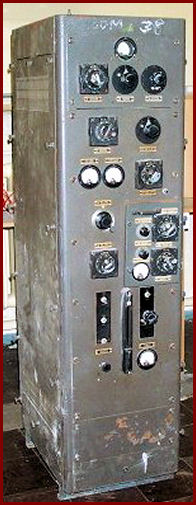
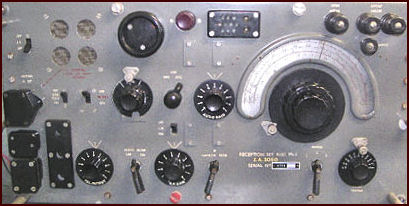
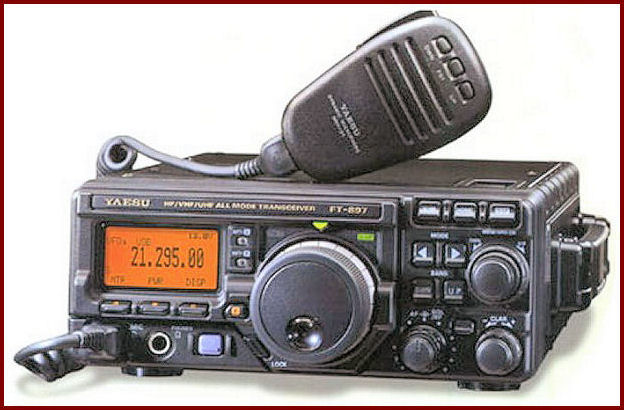
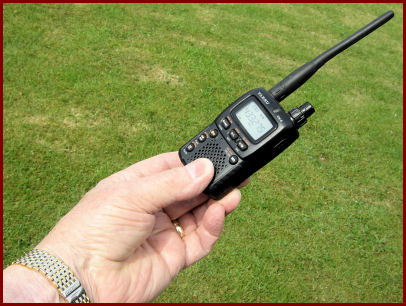
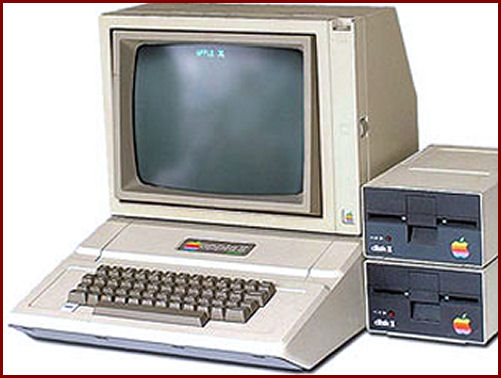
.jpg)
